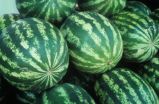(Press-News.org) People in creative professions are treated more often for mental illness than the general population, there being a particularly salient connection between writing and schizophrenia. This according to researchers at Karolinska Institutet in Sweden, whose large-scale registry study is the most comprehensive ever in its field.
Last year, the team showed that artists and scientists were more common amongst families where bipolar disorder and schizophrenia is present, compared to the population at large. They subsequently expanded their study to many more psychiatric diagnoses – such as schizoaffective disorder, depression, anxiety syndrome, alcohol abuse, drug abuse, autism, ADHD, anorexia nervosa and suicide – and to include people in outpatient care rather than exclusively hospital patients.
The present study tracked almost 1.2 million patients and their relatives, identified down to second-cousin level. Since all were matched with healthy controls, the study incorporated much of the Swedish population from the most recent decades. All data was anonymized and cannot be linked to any individuals.
The results confirmed those of their previous study, that certain mental illness – bipolar disorder – is more prevalent in the entire group of people with artistic or scientific professions, such as dancers, researchers, photographers and authors. Authors also specifically were more common among most of the other psychiatric diseases (including schizophrenia, depression, anxiety syndrome and substance abuse) and were almost 50 per cent more likely to commit suicide than the general population.
Further, the researchers observed that creative professions were more common in the relatives of patients with schizophrenia, bipolar disorder, anorexia nervosa and, to some extent, autism. According to Simon Kyaga, Consultant in psychiatry and Doctoral Student at the Department of Medical Epidemiology and Biostatistics, the results give cause to reconsider approaches to mental illness.
"If one takes the view that certain phenomena associated with the patient's illness are beneficial, it opens the way for a new approach to treatment," he says. "In that case, the doctor and patient must come to an agreement on what is to be treated, and at what cost. In psychiatry and medicine generally there has been a tradition to see the disease in black-and-white terms and to endeavour to treat the patient by removing everything regarded as morbid."
###
The study was financed with grants from the Swedish Research Council, the Swedish Psychiatry Foundation, the Bror Gadelius Foundation, the Stockholm Centre for Psychiatric Research and the Swedish Council for Working Life and Social Research.
Publication: 'Mental illness, suicide and creativity: 40-Year prospective total population study', Simon Kyaga, Mikael Landén, Marcus Boman, Christina M. Hultman and Paul Lichtenstein, Journal of Psychiatric Research, corrected proof online 9 October 2012.
Read scientific article: http://dx.doi.org/10.1016/j.jpsychires.2012.09.010
For further information, please contact:
Simon Kyaga, Consultant in psychiatry, Doctoral Student
Department of Medical Epidemiology and Biostatistics
Tel: +46 (0)8-524 822 77
Email: simon.kyaga@ki.se
Paul Lichtenstein, Professor
Department of Medical Epidemiology and Biostatistics
Tel: +46 (0)8-524 874 24
Email: paul.lichtenstein@ki.se
Contact the Press Office and doenload photos: http://ki.se/pressroom
Karolinska Institutet - a medical university: http://ki.se/english
Link between creativity and mental illness confirmed
2012-10-16
ELSE PRESS RELEASES FROM THIS DATE:
Non-coding antisense RNA can be used to stimulate protein production
2012-10-16
While studying Parkinson's disease, an international research group made a discovery which can improve industrial protein synthesis for therapeutic use. They managed to understand a novel function of non-protein coding RNA: the protein synthesis activity of coding genes can be enhanced by the activity of the non-coding one called "antisense."
To synthesize proteins, the DNA needs RNA molecules serving as short "transcriptions" of the genetic information. The set of all these RNA molecules is called "transcriptome." In the human transcriptome, along with around 25 thousand ...
Genetic protection against arsenic
2012-10-16
Evolution has not only controlled human development over millions of years, it also has an impact on modern man. This is one of the conclusions of a study of Argentinian villagers in the Andes, where the water contains high levels of arsenic. A gene variant that produces efficient and less toxic metabolism of arsenic in the body was much more common among the villagers than among other indigenous groups in South or Central America. The study was a collaborative effort by Karin Broberg from Lund University and Carina Schlebusch and Mattias Jakobsson from Uppsala University ...
Dark matter filament studied in 3-D for the first time
2012-10-16
Astronomers using the NASA/ESA Hubble Space Telescope have studied a giant filament of dark matter in 3D for the first time. Extending 60 million light-years from one of the most massive galaxy clusters known, the filament is part of the cosmic web that constitutes the large-scale structure of the Universe, and is a leftover of the very first moments after the Big Bang. If the high mass measured for the filament is representative of the rest of the Universe, then these structures may contain more than half of all the mass in the Universe.
The theory of the Big Bang predicts ...
The sound in Saturn's rings: RUB-Physicists explain nonlinear dust acoustic waves in dusty plasmas
2012-10-16
Dusty plasmas can be found in many places both in space and in the laboratory. Due to their special properties, dust acoustic waves can propagate inside these plasmas like sound waves in air, and can be studied with the naked eye or with standard video cameras. The RUB physicists Prof. Dr. Dr. h.c. Padma Kant Shukla and Dr. Bengt Eliasson from the Faculty of Physics and Astronomy have published a model with which they describe how large amplitude dust acoustic waves in dusty plasmas behave. The researchers report their new findings in the journal Physical Review E.
Different ...
Novel discovery links anti-cancer drugs to muscle repair
2012-10-16
OTTAWA, October 16, 2012 – Few drugs are available to treat muscle injury, muscle wasting and genetic disorders causing muscle degeneration, such as Duchenne muscular dystrophy. A compelling discovery that may change this was made recently by a research group led by Dr. Robert Korneluk, distinguished professor at University of Ottawa's Faculty of Medicine and founder of the CHEO Research Institute's Apoptosis Research Centre, was reported today in Science Signaling.
"We know of five pharmaceutical companies pursuing phase one clinical trials with specific drugs to treat ...
Pollenizer research should help seedless watermelon farmers
2012-10-16
Research from North Carolina State University on flower production and disease resistance in watermelon varieties should help bolster seedless watermelon harvests for farmers.
Seedless watermelons are more popular than seeded watermelons, making them a more profitable crop for farmers. But the flowers of seedless watermelon plants must be fertilized with pollen from the male flowers of seeded watermelon plants, because seedless plants do not produce genetically viable pollen.
This is a problem, because seeded watermelon plants take up space, nutrients and water that ...
A change of strategy is needed to save the Sumatran orangutans
2012-10-16
This press release is available in German.
Orangutans are the only large apes in Asia and mainly live in trees. Today, the population only includes two species: While the Borneo orangutan populates large sections of the Southeast Asian island of Borneo, nowadays the Sumatran orangutan is only found at the northern tip of the island of Sumatra. With a current population of only around 6,600 Sumatra orangutans, a figure which is dropping rapidly and constantly, this species is on the Red List of Threatened Species.
When large areas of rainforest were cleared in Sumatra ...
Less-invasive method of brain stimulation helps patients with Parkinson's disease
2012-10-16
Philadelphia, Pa. (October 16, 2012) – Electrical stimulation using extradural electrodes—placed underneath the skull but not implanted in the brain—is a safe approach with meaningful benefits for patients with Parkinson's disease, reports the October issue of Neurosurgery, official journal of the Congress of Neurological Surgeons. The journal is published by Lippincott Williams & Wilkins, a part ofWolters Kluwer Health.
The technique, called extradural motor cortex stimulation (EMCS), may provide a less-invasive alternative to electrical deep brain stimulation (DBS) ...
Stat5 predicts outcomes for prostate cancer patients after radical prostatectomy
2012-10-16
PHILADELPHIA—Men who had high levels of the activated Stat5 protein in their prostate cancer after a radical prostatectomy were more likely to have a recurrence or die from the disease compared to men who had little to no presence of the growth protein, according to a recent study published in Human Pathology by Jefferson's Kimmel Cancer Center researchers.
This suggests, Stat5, a protein that when activated signals cancer cells to grow and survive, could be an ideal biomarker to help guide patients and physicians for future treatment.
The research team, led by ...
Presidential candidate body language plays little role in voter perception
2012-10-16
Washington, DC (October 16, 2012) Viewer impressions of political candidates are heavily weighted to the content of their speech rather than the body language, a new study published in the Journal of Communication has found. The research, conducted by a trio of German scholars, presents a shift from past research showing that nonverbal communication plays a larger role than verbal in presidential debates.
Marcus Maurer (Friedrich-Schiller-Universitaet), Friederike Nagel (Johannes Gutenberg-Universitaet), and CarstenReinemann (Ludwig Maxillians-Universitaet) conducted ...



